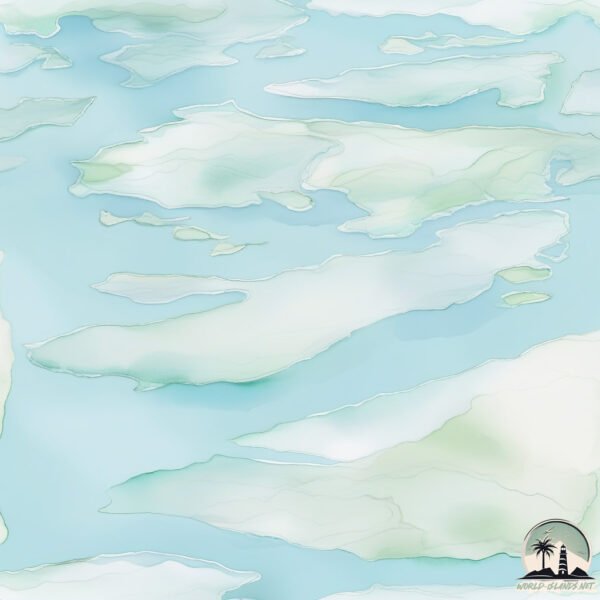Qeqertaq

Welcome to Qeqertaq, a Polar island in the Baffin Bay, part of the majestic Arctic Ocean. This guide offers a comprehensive overview of what makes Qeqertaq unique – from its geography and climate to its population, infrastructure, and beyond. Dive into the details:
- Geography and Size: Explore the island’s size and location.
- Climate and Weather: Weather patterns and temperature.
- Topography and Nature: Uncover the natural wonders of the island.
- Infrastructure and Travelling: Insights on reaching, staying, and making the most of your visit.
- News and Headlines: Latest News.
Geography and size of Qeqertaq
Size: 249.6 km²
Coastline: 187.5 km
Ocean: Arctic Ocean
Sea: Baffin Bay
Continent: North America
Qeqertaq is a Large Island spanning 250 km² with a coastline of 187 km.
Archipel: –
Tectonic Plate: Mariana – Located in the western Pacific Ocean, the Mariana Plate is a small oceanic tectonic plate. It is known for the Mariana Trench, the deepest oceanic trench in the world, formed by the subduction of the Pacific Plate under the Mariana Plate.
The geographic heart of the island is pinpointed at these coordinates:
Latitude: 72.26351749 / Longitude: -55.32829939
Climate and weather of Qeqertaq
Climate Zone: Polar
Climate Details: Tundra
Temperature: Cold
Climate Characteristics: The tundra climate features long, extremely cold winters and short, cool summers. Vegetation is limited to mosses, lichens, and small shrubs due to the low temperatures and short growing seasons. Biodiversity is low, but some specialized species thrive.
Topography and nature of Qeqertaq
Timezone: UTC-03:00
Timezone places: America/Sao_Paulo
Max. Elevation: 670 m
Mean Elevation: 266 m
Vegetation: Sparse Vegetation
Tree Coverage: 16%
The mean elevation is 266 m. The highest elevation on the island reaches approximately 670 meters above sea level. The island is characterized by Plateau: Elevated flatlands rising sharply above the surrounding area, with a maximum elevation over 500 meters but a mean elevation less than 300 meters, forming unique highland areas on islands.
Dominating Vegetation: Sparse Vegetation
These regions have limited plant growth, typically due to extreme conditions like aridity or poor soils. Vegetation is scattered and consists of hardy plant species. Qeqertaq has a tree cover of 16 %.
Vegetation: 4 vegetation zones – Diverse Island
Four distinct vegetation zones mark these islands as ecologically diverse. They might feature varied landscapes such as forests, beaches, grasslands, and rocky areas. Such diversity reflects the island’s complex ecological interactions and varied habitats, which can support a rich array of wildlife and plant species.
Infrastructure and Travelling to Qeqertaq
Does the island have a public airport? yes.
Qeqertaq has a public and scheduled airport. The following airports are located on this island: Upernavik Kujalleq Heliport.
Does the island have a major port? yes.
Qeqertaq is home to a major port. The following ports are situated on the island: .
The mean population of Qeqertaq is 1 per km². Qeqertaq is Uninhabited. The island belongs to Denmark.
The name of the island resonates across different cultures and languages. Here is how it is known around the world: Arabic: جزيرة غرينلاند; German: Grönland; Spanish: Groenlandia; French: Groenland; Portuguese: Groenlândia; Russian: Гренландия; Chinese: 格陵兰岛
Continuing your journey, Kigataq is the next notable island, situated merely km away.
New Island | New Discovey | Northernmost Island | Qeqertaq Avannarleq | New Island Of Greenland



Denmark is classified as Developed region: nonG7: Developed economies outside of the Group of Seven, characterized by high income and advanced economic structures. The level of income is High income: OECD.
News – Latest Updates and Headlines from Qeqertaq
Stay informed with the most recent news and important headlines from Qeqertaq. Here’s a roundup of the latest developments.
Please note: The data used here has been primarily extracted from satellite readings. Deviations from exact values may occur, particularly regarding the height of elevations and population density. Land area and coastline measurements refer to average values at mean high tide.
